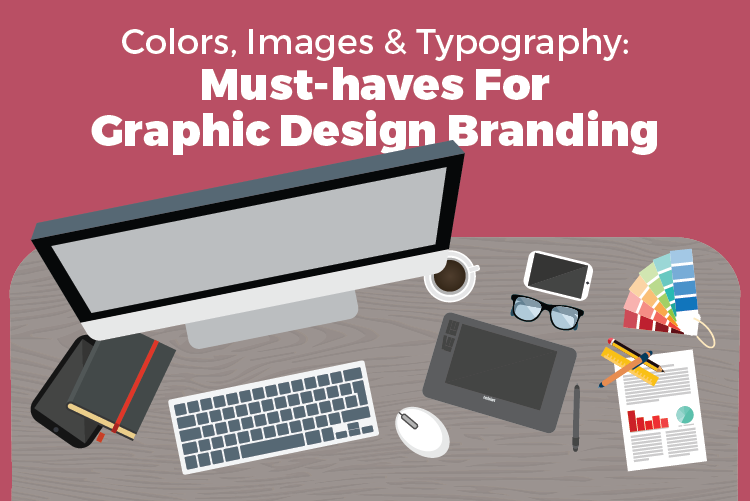Colors, Images & Typography: Must-Haves For Graphic Design Branding

Graphic design branding is a very personal thing. Just look at your friends’’ Pinterest boards, Twitter pages or Facebook timeline photos. These are very simple elements of everyday design, yet they express individuality and distinguish personal preference. Designing for a brand is very much the same - every company has a unique voice and mission. By following a few basic design principles, you will create a solid foundation from which you can build your brand to stand out from the crowd.
Color
1. Keep it simple.
When selecting colors that will distinguish your brand, try not to go too crazy. Select two or three complimentary colors that you like because you want them to last you for quite a while, so you don’t have the sudden urge to rebrand down the road. Once you have your two or three color preferences, think about shades and tints. For your additional color needs, try using darker or lighter versions of your selections; This will keep your branding consistent and keep the focus on the most important part of your company -- your content.
2. Think outside the bright blue box.
A lot of major companies, including your favorite “W” big box retailer, lean toward bright blue for their branding. It’s a great choice if you’re looking for a bold statement, but think outside the (big) box. Go for colors that speak directly to your company (eg. Coca Cola’s Red, Brown and Black) or try for colors that simply contrast well and distinguish your company (eg. Dunkin Donuts’Donut’sDonuts’ bold orange and pink). Try using sites like Coolers, Adobe’s Kuler or Paletton to help you simplify color palette selection.
Imagery
1. Pick a style.
When it comes to imagery, you want to pick a style and stick with it. If you find yourself selecting photos with certain colors or a cartoonish graphic style, keep it up. Switching your image style too often can be distracting, especially when you have multiple varying images on one page. Keep it clean and cohesive.
2. Use free image sources.
Don’t have a graphic designer to create your imagery from scratch? Fear not, there are copious amounts of free or low cost image sources available that provide a variety of images to choose from. Freepik is a great resource for everything from vector images, photographs and small icons. Sites like Dreamstime offer high quality options for penny-pinching graphic design basics. Of course you can always use the well-beloved iStockPhoto by Getty Images or ShutterStock if you’re looking for something more specific, but at a variety of price points.
Don’t know where to start with images? Try Pinterest. A quick search for ‘graphic design basics’ or ‘free vector images’ produces a variety of results that can lead you to reliable and well designed imagery, and a lot of sources just request you to sign up for their email list in return.
Typography
1. Rule of three
Stick to two typefaces for your brand, no more than three. Select one strong font for your main branding needs--serif or sans-serif--just make it a simplified representation of your company’s style. Second, combine your serif with a sans-serif or vice versa.
Contrast is key here, you want to pick something that pairs well with your main typeface, but doesn’t look just like it. This will give you contrast between your headers and subheads, and distinguishes your body copy just enough that everything doesn’t look like one large block of text. If you’re feeling brave, go for that third font- - try selecting something with a different weight, but in the same font family.
2. Use Google Fonts.
Google Fonts is a vast database of open source fonts that is compatible with most web browsers and can simplify the overbearing process of choosing your typefaces. Use the filters to choose between serif or sans-serif fonts, thickness (weight), width and slant. Also, when you use Google’s database, your web designer will thank you. Google Fonts are easily added to any webpage, and will keep your branding consistent across all platforms.
By keeping design clean and fresh, your graphic design branding will speak for itself. The variety of options available for color, imagery and typography allows for a clear visualization of what makes your company unique.
If you're looking for other ways to differentiate your brand, check out our blog on the very same topic.


